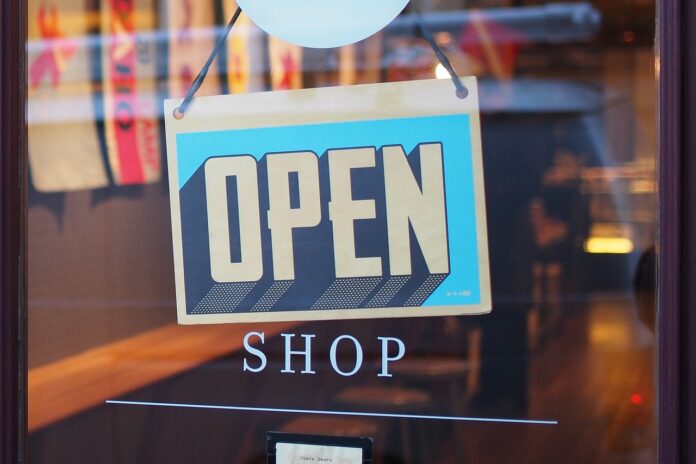If you’re trying to open a food service business in Manchester, you may feel a bit overwhelmed at all the various steps and tasks involved. However, if you want to forgo many of the headaches involved in the process, you can opt to open a pop-up food stall instead. Pop-up shops are prevalent these days, and they can appear practically anywhere.
Since Manchester is relatively pop-up friendly, we will look at the steps involved in opening a food stall within the city. So whether you’re starting a brand-new business or looking to expand your brand, here’s everything you need to know.
Benefits of a Pop-Up Shop
Pop-up shops have been “popping up” a lot in recent years, and when you look at the advantages they offer, it’s easy to see why. Here are four reasons why opening a pop-up in Manchester (or anywhere) is a wise business decision:
- Cost-Effective – The primary benefit of opening a pop-up is that you don’t have to invest as much in infrastructure or machinery. In some cases, you can simply rent what you need from your chosen venue. Rather than signing an expensive lease and paying to renovate the space to fit your needs, you can save tons of money by opening a stand in an existing location.
- Innovative – Pop-ups are designed to be temporary retail establishments, so there’s less pressure to develop products or services that are a smashing success. So, if you’re trying out new recipes or just want to gauge interest, a pop-up allows you to push the envelope without committing to anything long-term.
- Engaging – Pop-up stalls have a more casual feel than a standard brick-and-mortar restaurant. So, it’s easier to talk with customers and get real-time feedback on your dishes. Also, if the menu changes from one day to the next, there’s less chance of an uproar since adjustments are expected.
- Buzzworthy – One of the best ways to generate interest in your brand is to promote your pop-up stall online. Since users know that you’ll be in place for a limited time, they’re more willing to come by and check you out. Even if you’re a new business, you can generate more buzz than you would if you were opening a traditional restaurant.
Steps to Follow When Setting Up a Pop-Up Shop
Although we’re talking about starting a pop-up food stall in Manchester, UK, you can use these steps to open a booth virtually anywhere in the world. The only significant difference is in the paperwork involved. So, let’s get started.
Step One: Find the Right Location
There are a couple of options available when choosing a spot for your pop-up restaurant. First, you can work with an established (yet non-competing) business that offers suitable foot traffic. The second option is to rent a designated pop-up space. The latter option can be ideal because pop-up venues are often set up to accommodate food stalls. For example, you can rent a venue with a fully-stocked kitchen and dining area, making it easier to prepare your food and serve guests. Otherwise, you’d have to supply everything yourself.
That said, there are a few other factors to consider when choosing a location, such as:
- Traffic – Not only do you want a spot with lots of people already, but you want to make it as easy as possible for customers to stop by your stall. If it’s too crowded or you’re out of the way, there’s less chance people will make an effort.
- Infrastructure – Depending on your needs, you might be able to get away with a few folding tables, a tent, and some portable cooking equipment. If you can work with limited supplies, you have much more flexibility. Otherwise, you need to find a location that can accommodate your specific needs. For example, where will guests eat? Are electricity and plumbing provided? What about a bathroom for employees and/or guests?
- Cost – High-profile locations can cost quite a bit, meaning you need to have relatively high margins to pay rent on your stall. Also, if you’re planning on staying for a while (i.e., several months), those costs can compound quickly. So, you have to weigh the potential sales against the razor-thin margin of error.
Step Two: Choose the Right Cart
Sometimes, the best option is to buy a mobile food cart and use it to serve pre-made dishes. While most people buy sausages, pretzels, and falafel from a food cart, there are plenty of other options. For example, what if you had a frozen dessert cart where you could make ice cream and other treats from scratch?
During this step, you have to consider the capabilities of each cart and compare them to your menu options. For example, if your menu has fried food, you need a deep fryer. If you’re selling cold or frozen food, you need something with a cooler on board. In some cases, a multi-function cart may dictate your menu or vice versa.
Step Three: Build Your Menu
Before you can put too much money into your food cart, you need to know what you will sell. Here are some tips on how to create a compelling yet lean menu:
- Focus On Your Strengths – If you’re running the pop-up stall, you need to know how to make every dish. Alternatively, if you’re using someone else for food preparation, they need to be able to prep and cook everything. So, if you’re a whiz on the fryer but don’t do well on the grill, it’s best to create a fried food menu.
- Consider Preparation – The best food takes time to make, but what if you have a line of hungry customers waiting? Regardless of your dish selection, you need to prepare ingredients ahead of time. So, you have to think about which elements can stay stable easily and which need to be made to order. Overall, speed is often the primary factor.
- Don’t Overcomplicate Things – Full-sized restaurants can have extensive menus because they have walk-in coolers and freezers. As a pop-up, you likely won’t have access to such equipment. So, you want to focus on a limited menu of easy-to-make dishes. Also, when thinking about sides, try to stick to one or two options. For example, if each dish comes with fries, you can make large batches at once to serve more customers.
Step Four: Source High-Quality Equipment
You can’t source cooking equipment until you know what you’re going to serve. As we mentioned, you’ll need a deep fryer if you’re making fried foods, or you’ll need a gas grill if you want to cook fresh-grilled meats and vegetables.
Ideally, you’ll only need a couple of appliances and various dishes and utensils to make your food. As a rule, kitchen appliances include a fryer, flat top grill, steam table (for keeping food warm), cooler, freezer, and potentially blenders or food processors.
You also have to consider elements like prep and serving tables. If you’re not renting a full-service venue, you need materials that make it easier to serve your guests. Other components can include:
- Dish Washing Area – Will you have access to a sink to clean dirty dishes? What about a full-sized dishwasher?
- Hand Washing Station – If you don’t have a spot with indoor plumbing, you need to supply your own water, pump, and faucet.
- Shelter – Even if your pop-up is indoors, a mobile tent can work well for promotion and storage. Simply hang some mesh gear nets from the top, and you’re ready to store pots, pans, and paper goods.
Step Five: Consider Permits and Licensing
Even though your pop-up stall is temporary, you need proper documentation before you can legally serve customers. You’ll need a business license, food service permit, and an inspection certificate, among other things. You can find out more about Manchester permits here. Be sure to give the city enough time to process your applications so that you can be above board before you start cooking. Since the city can move pretty slowly, more time is always recommended.
Step Six: Brand Your Pop-Up Stall
Whether you’re opening a restaurant or a food stall, you need to get noticed. So, once you have your menu developed, start working on brand materials, such as:
- Logo – As it’s a pop-up, and you are probably just testing the market there is no need to pay too much for your logo, you can get a cool logo design quickly with a logo maker for a few pounds.
- Brand Personality – Your personality will show through in the food and how you market your stall. Do you want to be fun and innovative, or classy and chic? Again, consider your target demographic and appeal to their tastes (literally and figuratively).
- Signage – Signage is super important for a pop-up you want to have a billboard outside that highlights your name and food offering. The billboard should align with your branding. Also, if you are using board-flippers to advertise on the street you will need signage for them to hold.
Step Seven: Price your Menu
As we mentioned, the cost of your venue can vary based on your location, but some spots can get pretty expensive. Other cost considerations include:
- Food – Where will you buy your food, and how much will you pay for it?
- Labor – Are you running the stall solo or with employees? What are their starting wages?
- Supplies – Are you renting equipment and utensils or buying them yourself? What about getting second-hand materials?
- Paper Goods – How are you serving your food? What about napkins, straws, flatware and to-go containers?
Once you’ve calculated your costs, you can price your menu accordingly. As a rule, menu prices should be around four to six times your food cost to accommodate all other expenses.
Step Eight: Build Some Buzz
If you want to succeed, you have to make your stall appealing to customers. Here are four ways to drum up some business for day one and beyond:
- Social Media – Create profiles and promote your pop-up before you even start. The sooner you can create food posts, the sooner you can gauge interest and adjust your menu accordingly.
- Flyers – Since you’ll be in a physical location, you can hand out or post flyers nearby. You may also want to hire people to hand flyers out to passers-by.
- Coupons and Deals – Who doesn’t love discounted food? You can incorporate coupons with flyers or hand them out separately. You can also include discounts for guests who share their experiences on social media.
- Rewards and Referrals – With a pop-up stall, customers will be the best brand ambassadors. You can create a loyalty program where customers can get rewarded for bringing friends or buying food multiple times.
Overall, starting a pop-up food stall in Manchester is an excellent way to make money and engage with your customers. Now that you know the steps involved, you can make your pop-up a huge success! Cheers!







